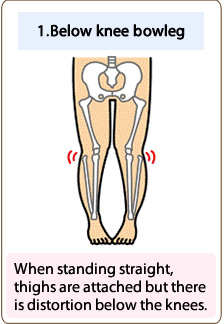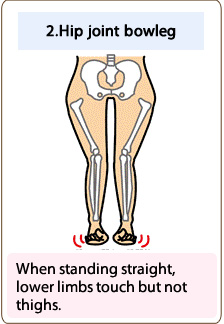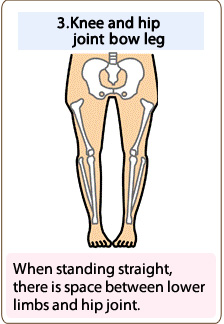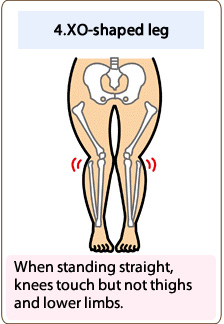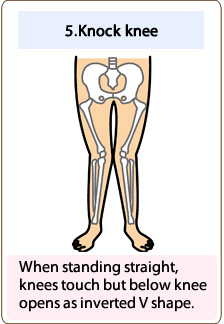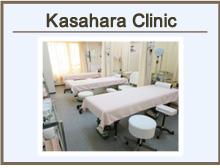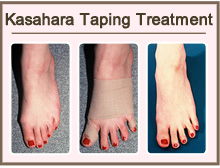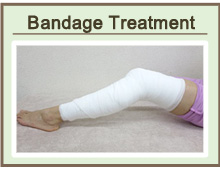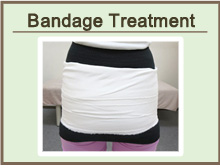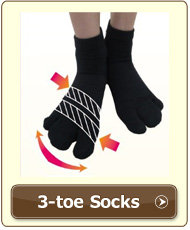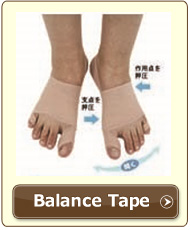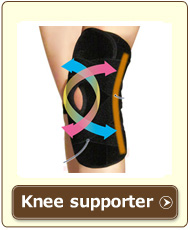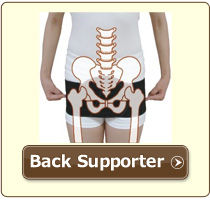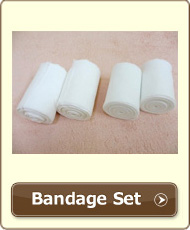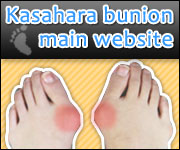Bowleg, knock knee and bunion
Condition and cause of bowleg and knock knee according to the types
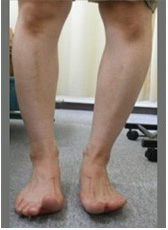
30’s female
Ungrounded toe, 0-shaped leg (hip joint and knee joint), knee pain, stiff
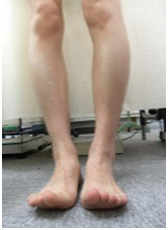
30’s female
Ungrounded toe, o-shaped leg, scoliosis, panic attack
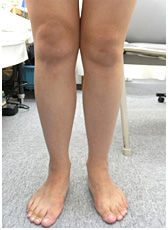
30’s female
Ungrounded toe, knock knee, autonomic imbalance, hyperpnea, headache, dizziness
Bowleg is generally characterized by extra space between knees and hip joint when standing straight with feet touching. After 40 years of treatment experience at Kasahara clinic, we recognize 4 different types of bowleg in addition to knock knee. These 5 types of leg deformity have different causes and appearances.
Mechanism of bowleg and knock knee
Even after a chiropractic adjustment, making the outer side of shoe sole higher, or wearing a supporter to tighten knees during night, bowleggedness will return in daily walking unless the mechanism of occurrence is understood. This key is correcting the sole balance, the foundation of the body.
1.Below knee bowleg
Using the principle of a lever, the foot and tips of toes slip outward as the action point and the medial malleolus acts as the fulcrum point. The reaction point goes towards the head of the fibula, where the force works to pull it outwards. Consequently, the shin becomes projected and the muscle grows as well as additional fat outside of fibula.
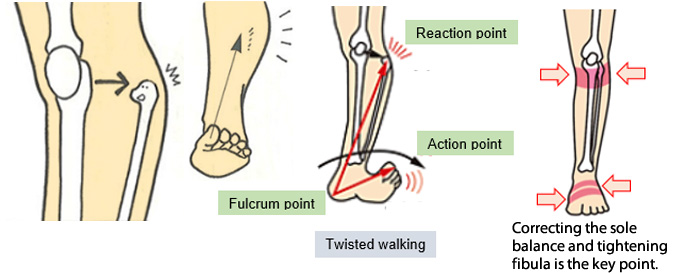
2.Hip joint bowleg
Using the principle of a lever, the foot and tips of toes slip outward as the action point and the medial malleolus acts as the fulcrum point. The force is then transmitted towards the greater trochanter as the reaction point, pulling it outward. Having slipped further out than the hip joint, the thigh and buttock muscles are pulled outward along with it, resulting in a wider hip.
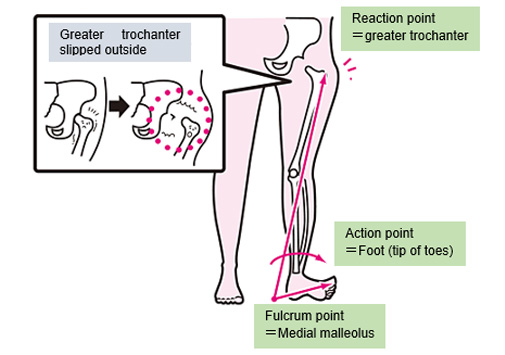
3.Knee and hip joint bow leg
Using the principle of a lever, the foot and tips of toes slip outward as the action point and the medial malleolus acts as the fulcrum point. The reaction point goes towards the head of the fibula as well as the greater trochanter, where the force works to pull it outward. When the inner thigh muscles (adductors) are not strong enough to tighten, this allows extra space between thighs and calves, or bowleg. Normally, this condition is seen primarily among the elderly as they have less muscle strength to tighten knees. However, these days, it is equally seen among young people with an imbalanced sole walking with their legs stretched out.
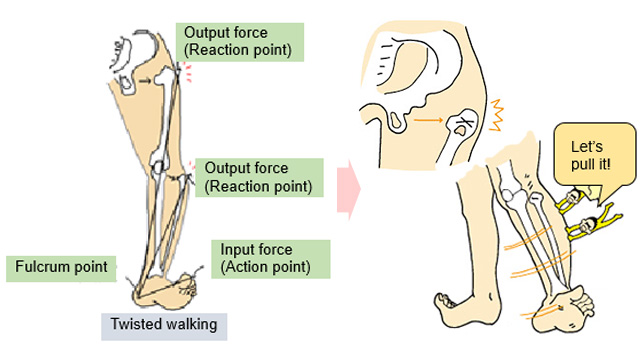
4.XO-shaped leg
Using the principle of a lever, the foot and tips of toes slip outward as the action point and the medial malleolus acts as the fulcrum point. The reaction point goes towards the head of fibula, where the force works to pull it outward. Moreover, when the muscle tightening the knee is strong, there is an opposing force between the top of the knee and below knee. The thigh bone leans obliquely towards outer edge of the hip joint. As a result of these two influences, there is a mixture of bowleg and knock knee. This case is often accompanied by leaned back knee.
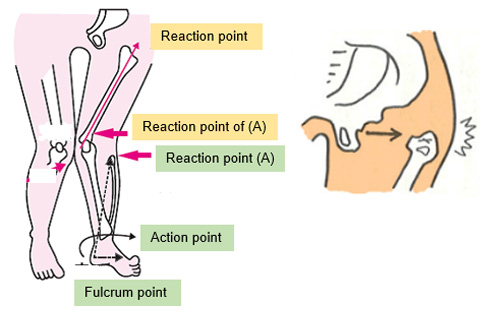
5.Knock knee
Applying the principle of a lever, the foot and tips of toes slip outward and make “twisted walking” as the action point while the medial malleolus acts as the fulcrum point. The reaction point goes towards the head of fibula, where the force works to pull the bone outwards. Moreover, when the muscle tightening the knee is strong, there are opposing forces above and below the knee, resulting in an inverted V shape with knees touching. Consequently, the greater trochanter is the reaction point and slips outward.
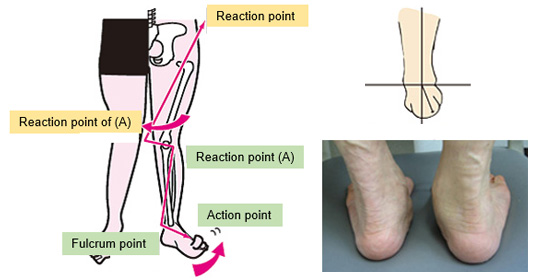
Treating bowleg and knock knee
It is important to correct the sole balance by Kasahara Taping Treatment or 3-toe socks to avoid “twisted walking” and promote walking with well-grounded toes to kick straight. At the same time, it is necessary to tighten and support the slipped greater trochanter with a bandage treatment or back supporter.
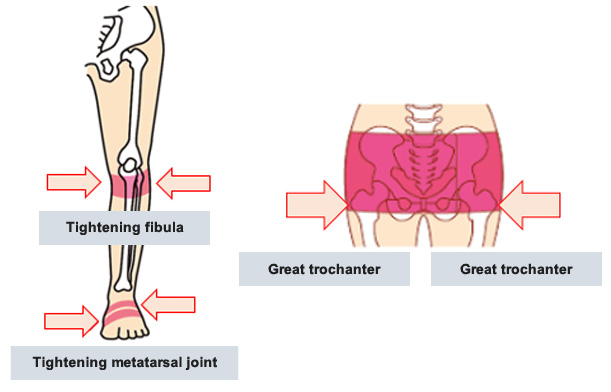
If you have any questions or would like to pursue treatment at our clinic, we are here to help.
Use the links below for more information about our clinic, the Kasahara Taping Treatment and related products.

